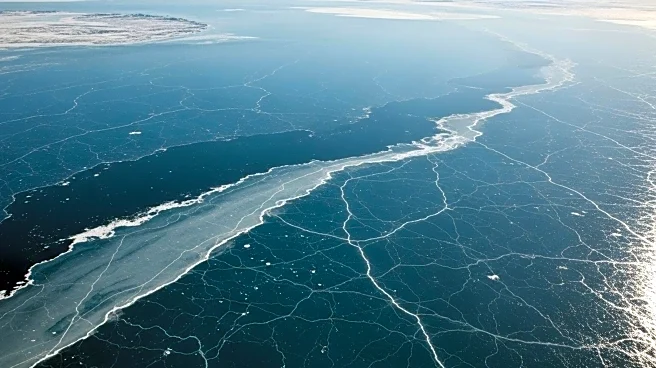What's Happening?
A recent study published in the Journal of Geophysical Research: Oceans indicates that the Atlantic Meridional Overturning Circulation (AMOC), a crucial system of ocean currents, may begin collapsing as early as 2055. The AMOC is responsible for regulating climate patterns across the Northern Hemisphere, including warming Western Europe and influencing monsoons in Africa and Asia. New simulations suggest that the stability of the AMOC is more fragile than previously believed, with potential collapse under a 'middle of the road' emissions scenario by 2063, and as early as 2055 under higher emissions paths. The weakening of deep water formation, largely due to melting Arctic ice and rising air temperatures, is a significant factor contributing to this potential collapse.
Why It's Important?
The collapse of the AMOC would have profound global impacts, including colder and stormier winters in Europe, increased sea levels along the U.S. East Coast, and instability in monsoon systems affecting food security and economic resilience. The study highlights the urgency of reducing carbon emissions to prevent such a scenario, aligning with international goals like the Paris Agreement. The potential collapse of the AMOC could unfold over decades, but its long-term impact would be significant, affecting agriculture, migration, and economic stability worldwide.
What's Next?
Researchers emphasize the importance of reducing carbon emissions sharply to prevent the collapse of the AMOC. Achieving net-zero carbon emissions by 2050 could make a meaningful difference, although some models suggest that collapse may still occur even under low-emission scenarios. This underscores the need for additional measures, such as carbon removal technologies and geoengineering interventions, to stabilize the AMOC.
Beyond the Headlines
The study introduces a new indicator, surface buoyancy flux, to track the AMOC's strength in real-time. This parameter combines heat and salinity changes at the ocean's surface to estimate shifts in water density, providing a more precise marker for detecting changes in the AMOC. The development of this indicator is crucial for understanding and mitigating the impacts of climate change on ocean currents.












